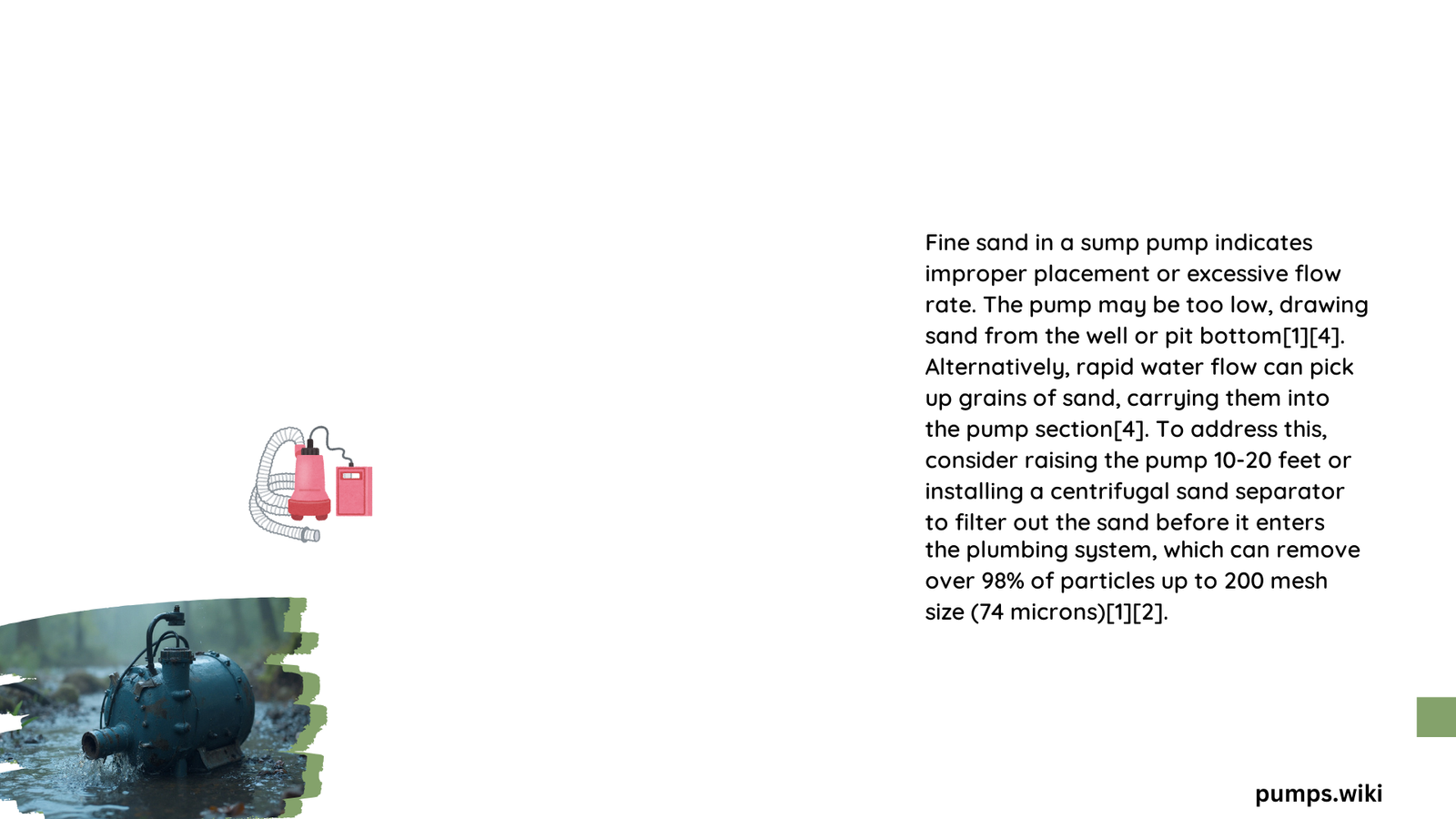Fine sand infiltration in sump pumps represents a critical drainage system challenge that can compromise pump efficiency, cause mechanical wear, and potentially lead to system failure. Homeowners experiencing sandy water intrusion face complex issues requiring strategic intervention, comprehensive understanding of soil dynamics, and targeted filtration solutions to protect their basement water management infrastructure.
What Causes Fine Sand to Enter Sump Pumps?
Soil Composition and Erosion Dynamics
Fine sand enters sump pumps through multiple interconnected mechanisms:
- Sedimentary Soil Characteristics
- Sandy or loose sedimentary soil layers
- High water table environments
-
Geological terrain prone to erosion
-
Water Movement Patterns
- High-pressure groundwater flow
- Seasonal water table fluctuations
- Intense rainfall or snowmelt events
How Does Soil Structure Impact Sand Infiltration?
| Soil Type | Sand Infiltration Risk | Drainage Characteristics |
|---|---|---|
| Sandy Loam | High | Rapid water movement |
| Clay Soil | Low | Restricted water flow |
| Silty Soil | Moderate | Moderate sediment transport |
What Are the Potential Risks of Sand in Sump Pumps?
Mechanical Degradation Factors
- Abrasive Wear
- Accelerated impeller damage
- Increased friction on mechanical components
-
Reduced pump efficiency
-
Performance Limitations
- Reduced water discharge capacity
- Higher energy consumption
- Potential premature pump failure
How Can Homeowners Prevent Sand Infiltration?
Comprehensive Filtration Strategies
- Physical Barriers
- Install filter fabric around perforated pipes
- Use granular fill with coarse rock mixture
-
Implement sump pit liners with strategic hole configurations
-
Pump Placement Techniques
- Elevate pump using concrete blocks
- Create gravel base underneath pump
- Maintain minimum 3-inch clearance from pit bottom
What Maintenance Practices Minimize Sand Accumulation?
Recommended Inspection Protocol
- Quarterly visual inspection
- Biannual filter fabric cleaning
- Annual comprehensive system evaluation
- Sediment trap installation
- Professional drainage assessment
Technical Specifications for Sand-Resistant Sump Pumps
Recommended Pump Characteristics
- Impeller Design: Vortex or semi-open configurations
- Material Composition: Corrosion-resistant alloys
- Filtration Capacity: Minimum 50-micron sediment handling
- Power Range: 1/3 to 1/2 horsepower for residential applications
Cost-Effective Implementation Strategies
| Solution | Estimated Cost | Implementation Time |
|---|---|---|
| Filter Fabric | $50 – $200 | 2-4 hours |
| Granular Fill | $100 – $500 | 1-2 days |
| Comprehensive System Upgrade | $500 – $1500 | 2-5 days |
Expert Recommendations

Professional drainage specialists consistently emphasize proactive management over reactive solutions. Regular maintenance, strategic filtration, and understanding local geological conditions remain paramount in managing fine sand infiltration.
Key Takeaways
- Identify soil composition
- Implement multi-layered filtration
- Choose appropriate pump specifications
- Conduct regular system inspections
Reference:
– USGS Groundwater Information
– EPA Drainage Management Guidelines
– National Drainage Association Resources
